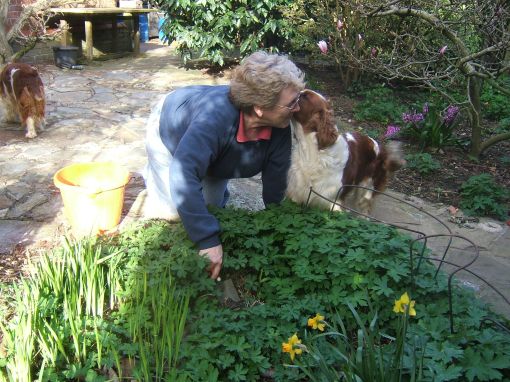
Having spent many happy hours watching David Letterman’s Late Show Top Ten Lists, I thought I would compile my own version!
10 Reasons why gardening is better than housework
10. Cafes at garden centres tend to be more relaxing than those at supermarkets. Let’s be fair, their wares to lend themselves to a more convivial atmosphere. They can include fountains, foliage, colourful plants and I have even seen one with a peacock.
9. Visiting gardens gives you the opportunity to wander around someone else’s property. You can get ideas, experience their lifestyle, and enjoy the day out – and maybe peer in the windows. Apart from TV programmes, it is very rare to find someone, who is not a friend, who will welcome you into their house.
8. Gardening is all about taming nature – you can prune plants to go where you want, provide them with conditions they need and they will reward you. The humans, and to some extent the canines, you share your house with will have their own opinions on life!
7. Whilst both gardening and housework have a wide range of tools to make jobs easier to do, gardening tools tend to be much easier to use – when did you last see a trowel or secateurs with a detailed instruction book?
6. Your body sometimes decides that you have done enough work in the garden and it is now time to relax and sit back and enjoy the fruits of your labours.
5. You tend to use more calories gardening than on housework. Obviously it depends what you are actually doing, but according to CalorieLab.com, most household chores range between 100-200 calories per hour, whilst WebMD.com gives calorie values of 200-400 per hour for general gardening while heavy work can be much more.
4. Sometimes family members want to help you with the gardening – though canine help isn’t always appreciated! This rarely happens with housework.
3. When gardening, you see the seasons coming. You have the promise of the future. Indoors, the only event that has a major impact is Christmas.
2. Gardening means you are outside and can feel the sun on your back, the rain coming down or the chill of the evening. Indoors, you can fix the thermostat for a constant temperature.
1. Weeks and months after you have worked on an area in the garden, it looks better than when you did the work. Indoors, the moment when something looks its best is the second after you have finished the work.



